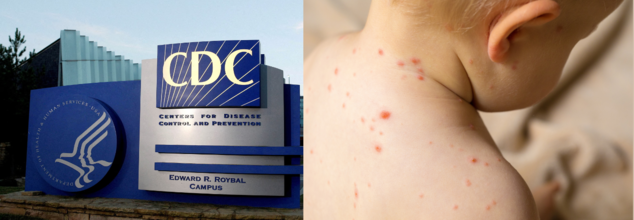- Health Conditions A-Z
- Health & Wellness
- Nutrition
- Fitness
- Health News
- Ayurveda
- Videos
- Medicine A-Z
- Parenting
- Web Stories

New Rule Requires ID Checks For Tobacco Sales To Buyers Under 30 In The US
Starting September 30, retailers selling tobacco products must check the IDs of buyers under the age of 30, according to a new rule from the U.S. Food and Drug Administration (FDA). The rule also limits tobacco vending machine sales to locations accessible only to individuals aged 21 and above.
Reason Behind The Move
This move is part of the FDA's efforts to reduce tobacco use among young people.
Dr. Brian King, head of the FDA’s Center for Tobacco Products, emphasised that keeping tobacco products away from youth is crucial in preventing addiction and the long-term health risks associated with tobacco use. According to decades of research, restricting access to tobacco can significantly reduce the number of people who become addicted to these harmful products.
Where Does The New Rule Apply?
The new regulation applies not only to traditional tobacco products but also to e-cigarettes, which have gained popularity among young users. Despite a decline in recent years, the U.S. Centers for Disease Control and Prevention (CDC) reports that 1 in 10 high school students and 1 in 22 middle school students admitted to vaping in the past 30 days.
What Do The Studies Say?
The FDA's focus on restricting tobacco sales is backed by studies showing that 9 out of 10 adults who smoke daily started before the age of 18. The federal age limit for purchasing tobacco products was raised from 18 to 21 in 2019, and previously, retailers had to ask for ID from buyers under 27.
What's Banned And What's Not?
However, the FDA has yet to impose a ban on menthol and flavoured tobacco products, which many experts believe are especially appealing to young people. Flavored tobacco, including menthol, is seen as a significant factor in attracting kids and teens to smoking.
The FDA has been considering these restrictions for over a decade, but the final decision is still awaiting approval from the Biden administration.
While the new rule is a step forward, the FDA remains vigilant in ensuring that retailers comply with the regulations. The agency has conducted 1.5 million inspections to date, resulting in 130,000 warning letters, more than 33,000 fines, and over 200 orders prohibiting tobacco sales for stores that have violated age restrictions.

Credits: Canva
World Ovarian Cancer Day 2025: Theme, Significance, and History
Observed each year on May 8, since 2013 is the World Ovarian Cancer Day which is an initiative of the World Ovarian Cancer Coalition. The day unites global efforts to raise awareness about this 'silent' and deadly disease. It also emphasizes the importance of recognizing the subtle symptoms and advocates for early diagnosis.
History of World Cancer Day
The first World Ovarian Cancer Day was launched by Target Ovarian Cancer- a charity organization in the year 2013. It is the world's largest cancer charity organization that finds life-saving research and provides assistance to women who are undergoing treatment. Target Ovarian currently collaborates with over a hundred ovarian cancer charities in 32 countries.
Theme of World Cancer Day 2025
"No Woman Left Behind". This year's theme for World Ovarian Cancer day is "No Woman Left Behind" which will focus on advocating and drawing the attention of policymakers regarding the dissimilarity existing in ovarian cancer care from around the world.
As per the International Society of Gynecologic Cancer, ovarian cancer, based on Globocan's 2020 data, is the 7th most common cancer among women and 8th most common cause of death occur globally.
Every year, around 314,000 women are diagnosed, while 207,000 die from the disease. It is more prevalent and is predicted to be on 40% rise by 2040 in low resource countries bearing the greatest burden 70% of women diagnosed each year.
As per the 2018 Every Woman Study, it was found that many women are being left behind as they wait for diagnosis, this is why this year's theme is called "No Woman Left Behind."
The goal also helps to educate about ovarian cancer globally, especially in underdeveloped or low-income countries. It can also work as a call to bring all global leaders to a single platform to invest in ovarian cancer research and development.
Furthermore, it helps in promoting and enabling the reach of effective screening and treatment for ovarian cancer to prevent any further complications.
Lastly, it helps in educating and empowering every woman about their own ovarian health and, in case of any warning symptoms, seeking medical attention.
What Are The Common Symptoms of Ovarian Cancer?
While early stage ovarian cancer could be asymptomatic, women are more prone to experience these symptoms, if the illness has progressed:
- Abdominal pain
- Bloating
- Sudden urge to urinate
What Exactly Is Ovarian Cancer?
As per the Centers for Disease Control and Prevention (CDC), ovarian cancer is a group of diseases that originates in the ovaries, or in the related areas of the fallopian tubes and the peritoneum.
Women have two ovaries, located on either side of the uterus in the pelvic region. These ovaries produce female hormones and release eggs needed for reproduction. Connected to the uterus are two fallopian tubes—thin, elongated structures that extend from each ovary. The eggs travel from the ovaries through these tubes to reach the uterus.
Ovarian cancer includes several types of tumors and subtypes. The most common type is adenocarcinoma, with serous adenocarcinoma being the most frequent subtype. Most serous adenocarcinomas are high-grade, meaning they grow and spread quickly.

Credit: Canva
Does Chemotherapy Cause Dementia?
Chemotherapy is a widely used cancer treatment involving powerful medications that target and destroy cancer cells. However, these drugs can also affect healthy cells, leading to various side effects. According to the American Cancer Society, common side effects of chemotherapy include fatigue, hair loss, infection, easy bruising or bleeding, anaemia, mood changes, and cognitive difficulties often referred to as 'chemo brain.'
The relationship between chemotherapy and dementia remains a subject of debate among researchers. Conflicting studies present differing perspectives on the potential link. For instance, a 2017 study examined the risk of Alzheimer’s disease in female breast cancer survivors. The researchers noted that those who underwent chemotherapy might be at an increased risk of Alzheimer’s, particularly if they experienced changes in specific brain structures. However, they also observed that women who did not receive chemotherapy also had a higher risk, suggesting that structural changes in the brain might contribute to Alzheimer’s rather than the cancer treatment itself.
Conversely, a 2021 study involving 135,834 individuals aged 65 and older with colorectal cancer indicated that chemotherapy might actually reduce the risk of Alzheimer’s and other forms of dementia. Further complicating the narrative, a 2022 longitudinal study found no definitive evidence linking chemotherapy to an increased risk of dementia. These varying outcomes underscore the need for more comprehensive research to better understand the connection between chemotherapy and cognitive decline.
While there is no cure for dementia, several treatment strategies can help manage its symptoms. Medications such as cholinesterase inhibitors and NMDA receptor antagonists are commonly prescribed to slow cognitive decline. Additionally, drugs to manage blood pressure, cholesterol, and depression can also be beneficial. Non-pharmaceutical approaches, such as regular physical activity, a balanced diet, avoiding alcohol and smoking, and staying socially active, may also help mitigate symptoms and improve overall brain health.
Cheotherapy Also Causes Other Neurological Conditions
Beyond the potential link to dementia, chemotherapy can cause other neurological effects. 'Chemo brain,' characterised by memory problems, difficulty concentrating, and trouble multitasking, is one of the most reported cognitive side effects. While these symptoms are typically temporary, they can persist in some individuals. Furthermore, chemotherapy can lead to neurotoxicity, which may result in limb weakness, numbness, headaches, and cognitive or behavioural issues.
Given the conflicting evidence on chemotherapy’s long-term effects on the brain, further studies are essential to establish a clearer understanding of the risks. In the meantime, patients undergoing chemotherapy should discuss any cognitive concerns with their healthcare providers and explore ways to manage potential side effects effectively.

New Possible Measles Exposure Hits Austin Weeks After CDC Buried Forecast Stressing Need For Vaccinations
Measles, a virus that was once officially eradicated in the United States in 2000, is making a shocking comeback — this time with more sinister layers than ever before. In the latest news, Austin, Texas, health officials announced that an individual with measles traveled to the city between April 25–27. The patron, who lives in El Paso, ate at Terry Black's Barbecue on Barton Springs Road on April 26 between 8–11 p.m. The news has prompted immediate warnings from Austin Public Health, advising anyone who was at the restaurant during that time to watch for symptoms up to May 17.
This exposure is in the midst of a spreading national outbreak that is quickly becoming the worst measles epidemic in the United States in decades. And what's worse is that all of this is happening in the wake of a CDC projection — one that was allegedly buried rather than publicly released — that warned of just this type of risk in low-vaccination areas.
The present outbreak, which started in a small religious group in West Texas earlier this year, has already reached four states in the Southwest. It has so far caused more than 1,000 reported cases, with public health officials estimating the actual numbers could be much higher because of underreporting. Unfortunately, the virus has already killed two school-age children and an adult.
Measles is one of the most contagious illnesses that science has known. A single infected person can spread the virus to as many as 90% of unvaccinated contacts. And in communities where vaccination rates are weak, the virus has rich soil in which to germinate. That makes the CDC's refusal to release its internal risk assessment especially troubling. In internal memos leaked to ProPublica, the agency had drafted a statement highlighting the urgent necessity for vaccination but refused to release it, arguing that it "doesn't say anything that the public doesn't already know."
Traditionally, the CDC has taken a clear and confident position on immunizations. Its messaging was explicit, forward-leaning, and informed by decades of evidence-based public health science. But now, the agency's most recent pronouncement is this: "The decision to vaccinate is a personal one." It's language that mirrors recent opinion piece from Robert F. Kennedy Jr., the new US Health and Human Services Department leader and longtime critic of vaccines.
Kennedy's leadership represents a dramatic turn. Once a marginal player in public health circles, his appointment has been accompanied by a weakening of federal vaccine promotion. Rather than emphasizing the well-documented effectiveness of the MMR (measles, mumps, rubella) vaccine — 97% effective — Kennedy has brought attention to exploring other measles treatments, many of which are untested or not yet supported by robust clinical evidence.
Declining Public Confidence in Child Vaccines Sounding Alarm
In 2000, when the United States formally announced that measles was eliminated, there was broad public backing for routine childhood vaccinations. Most Americans concurred that vaccinating children against infectious diseases such as measles was not only crucial—it was vital to public health.
Today, that virtual unanimity has frayed. Confidence in vaccines during childhood has taken a significant dent, spurred by an increasingly tidal wave of disinformation. Leading this turn is Robert F. Kennedy Jr., currently in charge of the U.S. Department of Health and Human Services. For more than two decades, Kennedy has advanced discredited arguments connecting childhood vaccines to autism—a story systematically debunked by science.
What was once a fringe perspective has now gained traction within federal health leadership. Kennedy's ascension to power not only indicates a wider skepticism among Americans but also represents a troubling shift in the national strategy for vaccination policy and public health messaging.
Jennifer Nuzzo, Director of the Pandemic Center at Brown University, expressed concern over the CDC’s decision to withhold data. “We’ve already had more measles cases in 2025 than in all of 2024,” she said. “It’s not a coin toss — the data clearly shows we’re in a worsening crisis.” Nuzzo emphasized the need for more transparency, not less, especially as the outbreak spreads to at least 19 states.
Symptoms to Watch for Following Austin Outbreak
The Austin case highlights the actual-world effect of federal indecision. Anyone who attended Terry Black's Barbecue during the period indicated is being encouraged to look out for symptoms, which are:
- Fever
- Cough
- Runny nose
- Red, watery eyes
- A rash that typically starts on the face and extends
- White spots within the mouth
Unvaccinated, immunocompromised, and pregnant individuals are particularly susceptible and may need preventitive treatment. Public health practitioners have again emphasized staying home and calling a healthcare provider at once if symptoms develop.
Adding to the issue is the recent move by federal officials to eliminate $11 billion in pandemic-related grants, leaving state and local health departments without the funding necessary to respond effectively to outbreaks. In Texas alone, officials have 702 confirmed measles cases as of May 6, up 19 from the previous week — and the cases keep rising.
At the same time, the CDC is disrupted internally as the agency readies to cut 2,400 jobs, further weakening its capacity to launch effective public health responses. With Kennedy's attention drawn away from vaccinations and towards experimental alternatives, public health infrastructure is stretched thinner at a critical juncture.
The most frustrating reality of this crisis is that it is entirely preventable. The measles vaccine has long been one of the most effective tools in modern medicine, and widespread immunization campaigns had nearly eradicated the disease just two decades ago. Yet, amid a landscape shaped by misinformation, underfunding, and wavering leadership, the U.S. is now facing an avoidable public health emergency.
As scientists caution, now is not the moment for passive messaging and loose reassurances. With the virus spreading still and lives hanging in the balance, public health authorities need to step back into the science, rebuild trust, and reestablish the life-saving potential of vaccines beginning with measles.
© 2024 Bennett, Coleman & Company Limited

